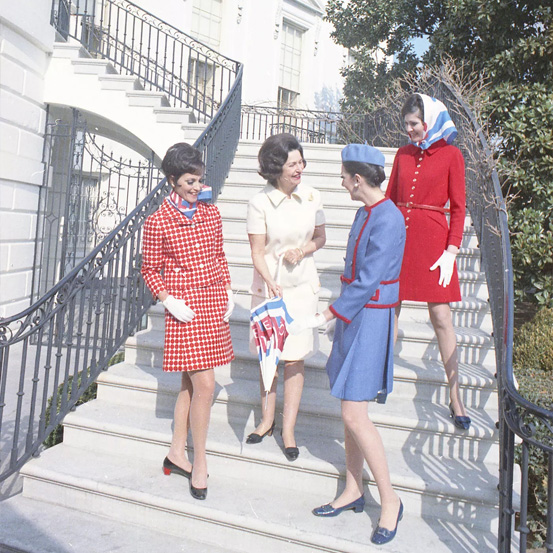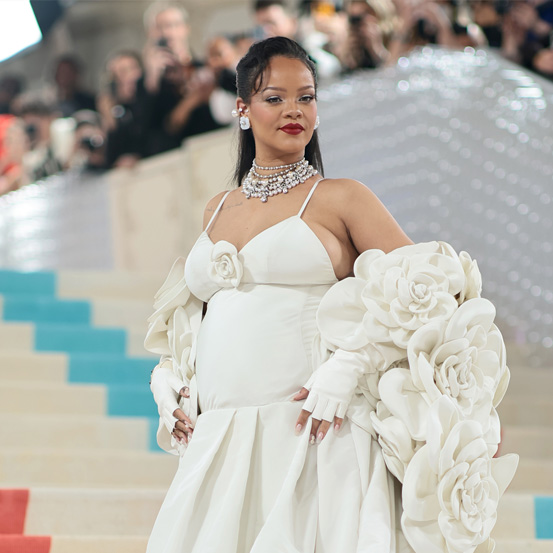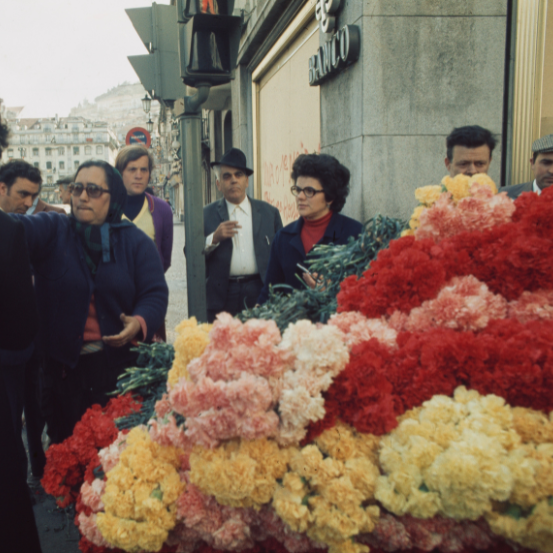Are fairy tales responsible for perpetuating a stereotyped role of women in society as the weaker sex and promoting gender inequality?
Not the fairy tale, but the two sides of these enchanting stories: when the star is a woman, but her best features revolve around her physical beauty, a submissive side and her life depends on being rescued by a prince, are we sending the right messages? Are fairy tales responsible for perpetuating a stereotyped role of women in society as the weaker sex and promoting gender inequality? Artwork by Olivia Erlanger.

Alison Lurie, a Pulitzer Prize-winning American writer, published an article in The New York Review of Books, in 1970, entitled Fairy Tale Liberation, followed by Witches and Fairies, a sequel to the previous one, in 1971, linking fairy tales to feminism. In them, she argued that these bedtime stories could be pushing more and more women's rights as they focused on strong female protagonists and whose presence full of resources and skills, in the more or less known stories of the genre, should make fairy tales "one of the few types of classic children's literature that a radical feminist would approve of." She also argued that these narratives had been, over the years, misrepresented by the men responsible for selecting, editing and publishing these fairy tales. The point of view served as fuel for a series of discussions on the topic that still manifests itself in essays and studies, namely those who are far from sharing the same point of view. Author Marcia R. Lieberman, in response, refuted the premise, in 1972, with 'Some Day my Prince Will Come': Female Acculturation through the Fairy Tale, not only vehemently disagreeing with the main argument about female protagonism, but also adding that, excusing the traits that reduced women to the stereotype of the social role because they were manipulated by men, had no place in that discussion, since “only the best-known stories, those that everyone read or heard, in fact, those popularized by Disney, affected masses of children in our culture” and this, she underlined, was something that worried her a lot in the contemporary process of female acculturation.
Indeed, when one thinks about fairy tales - above all, thinking about the most popular ones over the last century and today, that is, those to which children in Western societies in general have more access -, even without extensive academic training and from an empirical point of view, it is easy to perceive a standardization of its elements, namely its protagonist, and easy to find references that can perpetuate the patriarchy setting, placing the heroines often in roles where they are valued for their beauty and subservience. The trend in these tales is to validate the women for their pleasant physical traits and submissive posture, adopting a passive and dependent role, while the men are active, the rescuers, the ones who change the princess's destiny as a result of characteristics such as bravery and cleverness - and, although their beauty is mentioned, it's not what defines them the most: Sleeping Beauty waits for the prince to kiss her in order to be saved, Cinderella waits for the prince to find her with the other glass slipper, the Little Mermaid waits for the prince to kiss her to regain her voice… and the men, in the end, are faced with the personification of evil they have to fight off alone, while the protagonist is left on the sidelines. The fuse for the feminist backlash around these tales that became widespread, namely thanks to their Disney adaptations (but not only), is the fact that this obvious emphasis on visual and physical beauty may have created, throughout a girls' upbringing, expectations and false feelings about romance and a distorted self-image. In most popular versions of fairy tales, there are notorious limitations placed on female characters because of their gender and, at the same time, heightened expectations of male success linked to their social class, magic or virility.
It's not by chance that, in light of this objectified and oppressed role that emphasizes ideals of beauty, these enchanting stories have led to studies on the preponderance of beauty in its narratives: in the essay The pervasiveness and persistence of the feminine beauty ideal in children's fairy tales (2003), L. Baker-Sperry and L. Grauerholz carried out an in-depth analysis of 168 fairy tales by the brothers Grimm, pointing out the frequency of terms such as “beautiful”, “pretty”, “handsome” or “attractive”. and analyzing its correlation with goodness and its correlation with danger. The study showed that references to feminine beauty are five times more frequent than to masculine beauty, with young women being the most mentioned, also underlining that, in these texts, beauty is kindness and is rewarded - usually with a marriage to Prince Charming - while the absence of beauty is punished. If the heroine is beautiful and kind, the malevolent character must manifest opposite physical traits - think of the stepmother, the evil sisters, the evil witch…; Older women are usually ugly, cruel and determined to get their way, exposing, therefore, traits that directly threaten the feminine ideal in these tales, since they are strong and determined, even ambitious, pointed out Lieberman, who instead of accept their situation, outline strategies to change it, usually without the presence of a man (imagine that). Prince Charming is also usually described as handsome, but it is a trait that is secondary to his actions: he is brave and manly, saving the princess from towers and dragons, a poisoned apple, a sleeping spell, a voiceless curse, from a dysfunctional family of stepmother and stepsisters, while she, the (future) princess, naive, lets herself fall on the clutches of wtches and passively waits for the prince to come save her. Baker-Sperry and Grauerholz also noticed that the most reproduced stories were also those where beauty was most frequently mentioned, with the iconic Cinderella, Snow White and Sleeping Beauty being counted in the top 3, concluding that, within this context, being attractive is the most important attribute that a woman can possess and is often an indicator of greater probability of future happiness. The duo suggests that “this emphasis on the ideal of feminine beauty can function as a normative social control for girls and women”, insofar as it can convey the idea that choosing certain activities can make them less attractive, while at the same time instigates female competition regarding appearance and, therefore, minimises the chances of women mobilizing or uniting themselves. “Among other things, these stories present a picture of gender roles, behavior and psychology, and a way of predicting outcomes and fates according to sex, which is important because of the intense interest children have in endings,” Lieberman wrote, adding that all these stereotypes make girls "predisposed to believe in a link between having a pretty face and being a good person." Linda T. Parsons wrote something along these lines in her article Ella evolving: Cinderella stories and the construction of gender appropriate behavior (2004), published in the quarterly journal Children's Literature in Education: “Although fairy tales are not solely responsible for acculturation children, they are an integral part of the complex layers of cultural histories and influences that affirm and perpetuate cultural norms”. In fact, the fairy tales that we approach today as being the most popular are a reflection of their time: written and adapted by men at the end of the 19th and beginning of the 20th century, with references to Christianity (the matter of purity and marriage as indicators of success and happiness) are often based on stories of enchantment passed from generation to generation orally and later gained written form and that, invariably, with the literary success, took on the contours of the dominant social class. Built to mirror the customs, beliefs and principles of a particular culture, this mirror is also the result of the desired social image of those who write and tell the tale - and understanding the author and year of each of these stories is also contextualizing them. So Alison Lurie was not at all incorrect in this reference.
The plot-twist is curious to say the least, because the first so-called fairy tales were written women: the first time the term itself appeared in writing, it came from the Countess d’Aulnoy, a French author from the 17th century, who wrote a series of stories (she wouldn't be the only one, in her time - Mme. De Murat is another reference figure) that often focused on heroines who enjoyed wide autonomy and were often critical of French society. These were stories that often, if not always, included fairies, to underline that the “place of power in their tales resided in omnipotent women”, said Jack Zipes in The Oxford Companion to Fairy Tales (2000). D'Aulnoy called them Les Contes de Fées, coining the term and showing that the concept of fairy tales originally refers to narratives written by women, starring women and celebrating women, thus subverting the power of a male-dominated court. And to realize these contours, no matter how much later manipulation may have interfered (for example, the Brothers Grimm even published some stories less adapted to the society of the time that were not as well received as the tales that made them famous) is also to recognize that fairy tales, at their core, do not intend to be misogynistic and you can even read in them feminist ideals: “Some fairy tales can perpetuate that women need to be saved, but there are many that show exactly the opposite”, says Joana Canha, clinical psychologist and an important contradictory part in this narrative. “In the classical Beauty and the Beast, it is precisely Beauty who saves not only her father, but also the monster; Mulan saves the Emperor and takes the place of a man to spare her father; Brave prevents her father from killing her mother for not recognizing her and saves her relationship with her mother; Hansel and Gretel help each other and kill a witch who wanted to harm them and, more recently, Raya destroys the forces of evil and saves an entire country. These are just a few examples of tales (some older, others more recent) where the female gender has a dominant role and doesn't need to be saved. The way to go, I think, will be to promote the diversity of fairy tales, to be able to talk about them and, thus, to show children (and, perhaps, adults too) that there is a diversity of solutions and that the possibility of choice exists. To teach/promote gender inclusion, choices and possibilities and not their exclusion or limitation”, she adds.
Not least because the fairy tales originally written are a commentary on human behavior and morals (for example, Cinderella's sisters are punished for being evil, not for being women; in Beauty and the Beast, the princess finds love because she is a kind person, not because she is pressured to marry or because she is a woman… maybe even physical beauty wants to be not a synonym of goodness and success, but rather a metaphorical exponentiation of the characteristics considered beautiful, such as generosity and, on the other hand, physical ugliness a reflection of the ugliness of acts, in a more subliminal perspective), a natural evolution to the folktales that preceded them and that were passed on orally from generation to generation, usually in lower classes, aiming to bring some hope by conveying the message that everything is possible, like ascending to higher classes or getting out of a precarious or unhappy situation. The idea of a story that perpetuates gender inequality was not, it appears, the intention: “to look at fairy tales only as a way of constricting gender inequalities or the role of women (as submissive, in need of a hero and with little or no voice) is extremely reductive”, warns Canha. "Several authors argue that the most classic fairy tales convey the idea that women have a role of inferiority, creating the risk of this becoming acceptable in the eyes of those who listen to these tales and can be considered a daily custom, a normality in a society in which women are not able or have less right to have an opinion or live a life as they wish. But, on the other hand, fairy tales are important for childhood. They are more than happily ever after stories, portraying real moral lessons through the characters. These tales bring the possibility for children to consider a positive resolution of various anxieties, battles and problems in life. It also allows them to develop a critical sense, reasoning ability and promote their imagination and creativity (which is part of the foundation of being a child.) For these (and other reasons), storytellers play a pivotal role not only in how a story is told, but (should) promote the debate on them”. She adds: “We need to remember that children don't hear fairy tales the same way adults hear them. To look at their messages, we need to consider children's cognitive and emotional development. In a child, where the personality is still forming, where time is different (if we do the exercise of going back to our own childhood, the days seem longer) and where the rules and norms of society are not as ingrained as in adults, fairy tales (and here I am including dozens of fairy tales) are fertile ground for exploring various realities and possibilities. Children are not literal like adults, they are much more bound to question the world (even if they don't verbalize it), they are curious, absorb the world around them and therefore, they don't just see a Cinderella that is saved by the prince. They see (for example) a girl who has no parents and who lives in a house where others are mean to her, but who doesn't give up, who tries, and that there may also be godmothers who help her achieve the goal she wanted (which would be going to the ball)”. More than didactic, they create scenarios so that children can play roles in their internal struggles as part of a growing process towards adulthood, as Sheldon Cashdan refers in The witch must die: the hidden meaning of fairytales (1999), an argument based on Freud's psychoanalytic theory, later expanded by Bruno Bettelheim regarding the application of meaning through fairy tales. In The Uses of Enchantment (1977), Bettelheim elaborates on how children struggle to make sense of their lives, “a child needs to understand what is going on within his conscious self so that he can deal with it in the unconscious", arguing that fairy tales contain possibilities in the understanding of such due to the complex problems they present, such as "overcoming narcissistic delusions, parental dilemmas, sibling rivalry...". “The theme of fairy tales is much broader than 'just' the moral or description of a behavior. It is the possibility of imagining different realities, placing ourselves (in imagination) in them and thinking critically about them”, explains the clinical psychologist. Also because “for sure they also convey positive messages. Bruno Bettelheim talks about this in his best-known work, where he advocates an enormous therapeutic value in the relationship between children and fairy tales. Through the analysis of these tales, Bettelheim demonstrated how each of them reflects anxieties or internal conflicts that arise naturally at specific stages of development. These tales, despite being fiction, help the child to internally recreate some of their internal questions/doubts because they would allow the child to imagine what they would do in different situations and thus, learn to deal with some of their internal conflicts (not to act out the story of a literal form). Through the narrative, the child has the possibility to think of ways to deal with his fears, failures and to solve obstacles he feel. Even so, the most important and the basis of storytelling is to promote the connection and interaction of the child with the parents/educators, in a moment of sharing and liberty to talk. When we listen, we are not just listening, we are thinking, feeling and interacting in the most diverse ways.”
In fact, a child, at least the first times they are presented with a fairy tale, does not read it alone. And fairy tales pass from generation to generation depending on the social constraints of their interpreter. Just as one day others took enchanting stories and rewrote them or adapted them in versions that responded to the demands of a patriarchal society, the new versions, whether official or through the way we retell them to new generations, can also replace all the contours that can define the woman as inferior to her male peer. Throughout the 20th century and now in the 21st century, the audience for these fairytales has changed and, with it, values may have changed as well. For example, the Feminist Movement has created a cast of revised fairy tales that reverse or question traditional gender roles, consecutively empowering women with control over their destinies, freeing them from dependence on a man. “The result is an impressive production of non-sexist fairy tales for children and adults, as well as theoretical works that explore the underlying implications of gender roles in fairy tales,” wrote Jack Zipes in When Dreams Come True: Classical Fairy Tales. and their traditions (1999). “Change in society is inevitable and desirable. The way we are changing is so comprehensive that it naturally has positive aspects and negative ones”, confirms Joana Canha. “It must come from a young age and we are witnessing that same change. For some years now, fairy tales (in book and film) have brought new heroes of various genres, ethnicities and ages. Even in the remake of classics like Aladdin, the ending was changed from the well-known ending where the sultan gives the princess permission to marry someone who is not a prince, to the princess who becomes a sultan and has the power to be with whoever she wants. ”, she ponts out, adding that “the growing demand for schools where the environment is more inclusive, where they stimulate curiosity, critical thinking and attention to the child's developmental stages, shows this. It is a glimpse of the change in the system and society. The 1st cycle education systems of reference in the world have been doing so for some time. Fortunately, in Portugal, it is also a reality; a minority reality (unfortunately) and a work in progress. It seems to me that it is an endless work, but the work itself is on the path; not solely on the goal”.
The new feminist approaches paved the way for the fracture of this literary genre, precipitating new perspectives and more inclusion in postmodern versions with diverse social issues, among them feminism. Which is not to say, at all, an abandonment of the classics, which may have earned, for a fringe of scholars, a bad reputation, but which are not entirely the villain of this story: “If you want children to be smart, read them fairy tales. If you want them to be smarter, read them more fairy tales,” the clinical psychologist quotes Albert Einstein before continuing. “Although a part of the parenting community defends that young children should not be read fairy tales because they can be violent or induce them to have less appropriate behaviors, several studies show a positive influence on children's development: it is a way for parents to teach valuable lessons about critical thinking. Preventing them from reading stories where the princess needs a kiss from the prince to “live” (Snow White or Sleeping Beauty) or that it is acceptable to leave the house to go after a prince (The Little Mermaid) does not promote critical thinking; the showing and guided conversation does (always taking into account the age and stage of development of the child and the time of day when some of the stories are told). It's important in the development of early literacy, where these stories can create a basis for discussion about it, stimulating critical thinking and the expression of ideas and emotions with greater ease; it stimulates the ability to find solutions for the most varied anxieties or conflict situations; it's a message of resilience - today's world is confusing and scary, and both adults and children experience high levels of stress. Difficult situations happen to everyone and stories can play a supporting role in resilience. They can be a point of connection between some issues in the stories and real life, where (in the stories) the hero triumphs, showing that there are challenges in life and we need to try and believe that we can succeed. It is one of the foundations of literacy development, but it also emphasizes transcultural behavioral aspects (let us think of tales such as Mulan, where eastern culture is present, Brave in Scottish culture, Pocahontas in indigenous peoples, among others). Fairy tales are good tools for teaching children to tell a story. They help you learn about story development, conflict resolution, and character development. It helps them to differentiate fiction and non-fiction stories”. The best part of fairy tales is that, with regard to these stories malleable to the culture and time where and when they are (re)told over and over, is that we are the ones who decide how and when they “live happily ever after”.
Translated from the original on The Fairy Tale issue from Vogue Portugal, published may 2022.Full credits and stories on the print issue.
Most popular

Tendências do guarda-roupa das nossas mães e avós que regressam na primavera/verão de 2024
19 Apr 2024

Tudo o que deve saber sobre a Met Gala de 2024: Tema, anfitriões e muito mais
18 Apr 2024
Relacionados






